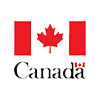NWCSAF/High Resolution Winds; AMV Software for Geostationary and Polar Satellites – Status in 2023
The “High Resolution Winds (HRW) software”, developed inside the “Satellite Application Facility on support to Nowcasting and very short range forecasting (NWCSAF)” standalone software packages, provides a detailed calculation of Atmospheric Motion Vectors (AMVs) and Trajectories locally and in real time by its users, with both geostationary and polar satellites.
Its latest version for geostationary satellites, NWC/GEO-HRW v2021, is available since April 2022. This version is able to calculate AMVs and Trajectories all around the world with MSG, Himawari-8/9 and GOES-16/18 satellites, with a better distribution of AMVs in the high, medium and low levels. Preparations are also finishing for NWC/GEO-HRW vMTG for MTG-I satellites, which will be released to users after the MTG-I1 commissioning phase, with similar outputs to the ones obtained with Himawari-8/9 and GOES16-17 satellites.
A second version for polar satellites, NWC/PPS-HRW, has also been prepared for release to users inside NWC/PPS v2021.3 software. It is able to calculate AMVs with 21 polar satellites using 6 different radiometers (AVHRR-3, VIIRS, MODIS, METimage, MERSI-2, SLSTR), after reprojection of the polar images in static working regions. This second version is able to calculate AMVs with visible, infrared and two different water vapour channels using all NWC/PPS-Cloud products as input, so increasing similarities with the procedure for geostationary satellites.
With both elements, “High Resolution Winds (HRW) software” permits the calculation of AMVs and Trajectories in all corners of the world using a very homogeneous algorithm, which can be very useful in global NWP models or climatic studies.






